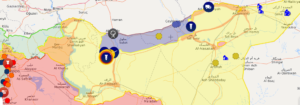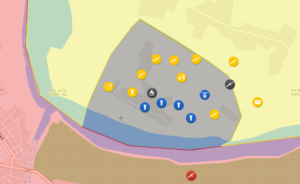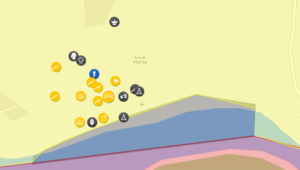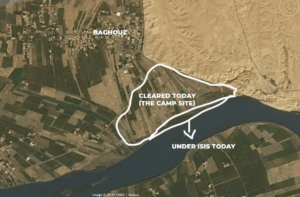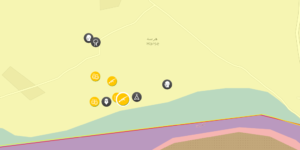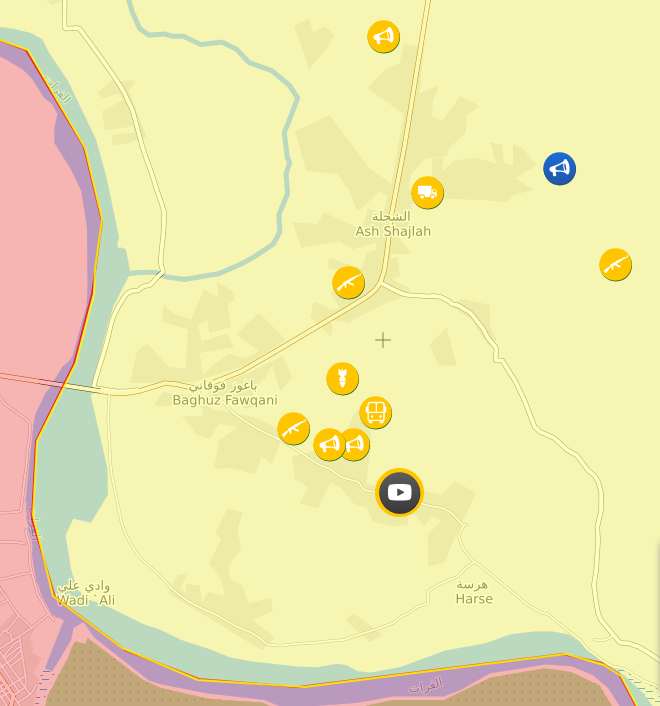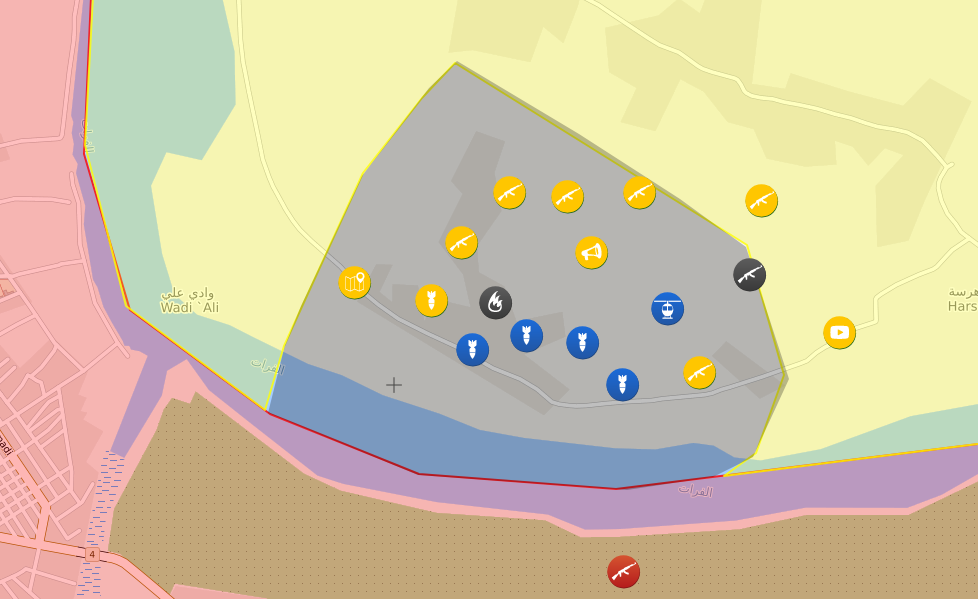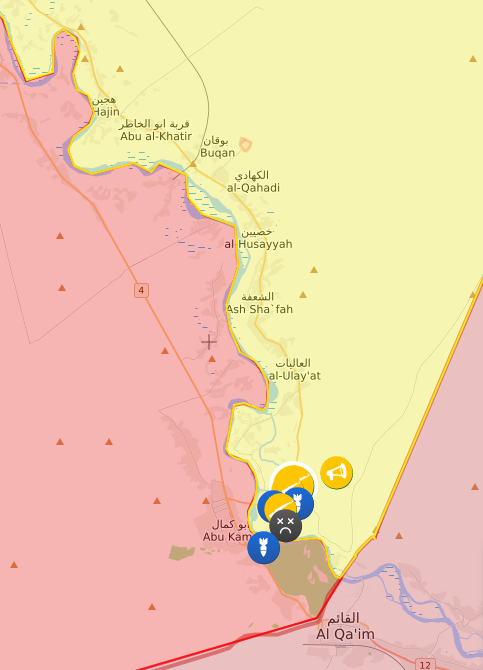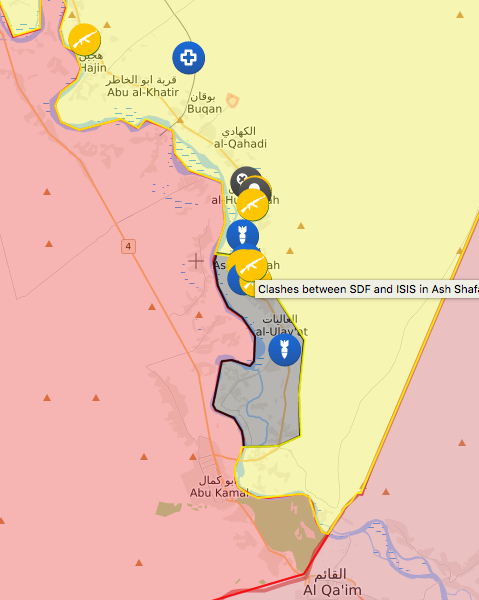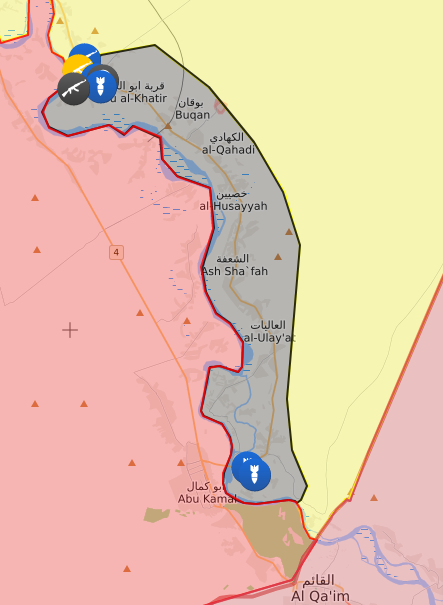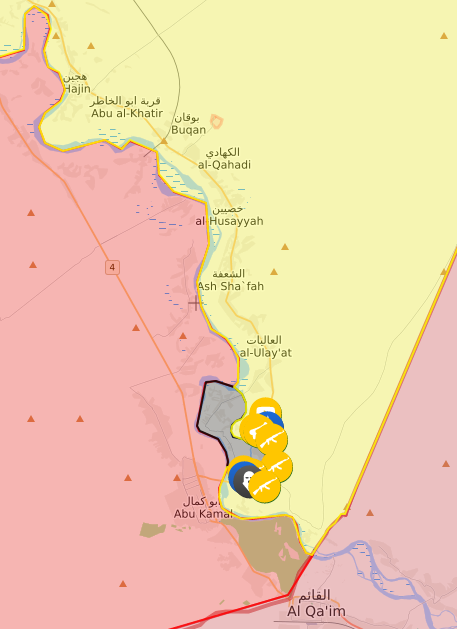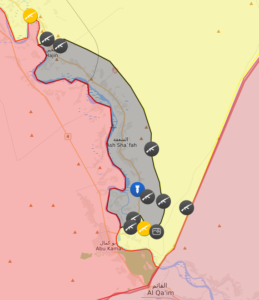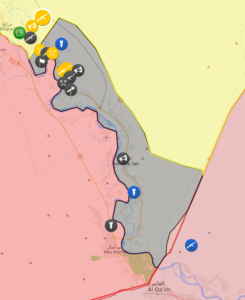Following the withdraw of a small number of U.S. troops in the area (I’ve seen estimates range from 25 to 100), Turkey has launched it’s threatened offensive against Kurdish held Syrian territory along the border (which seems to bear the Orwellian name “Peace Spring Operation“). Lots of airstrikes and shelling, but so far actual ground forces seem to be primarily Turkish-backed Syrian National Army (AKA The Army Formerly Know As The Turkish-Backed Free Syrian Army, which is different than the previous Free Syrian Army, which revolted against Assad) supported by small units of Turkish armor, plus artillery and air power. They’ve thus far made five modest incursions from Tell Abyad (AKA Tall Abiad and half a dozen other variations) to Ras al-Ayn. Thus far they haven’t exceeded the 20 mile buffer zone, and the deepest incursion seems to be about 12 miles in toward the Syrian M4 road.

There are a couple of pieces that cover some of some of the same ground I did on the situation. First, Andrew McCarthy covers the complexity of the fight:
The president at least has a cogent position that is consistent with the Constitution and public opinion. He wants U.S. forces out of a conflict in which America’s interests have never been clear, and for which Congress has never approved military intervention. I find that sensible — no surprise, given that I have opposed intervention in Syria from the start…The stridency of the counterarguments is matched only by their selectiveness in reciting relevant facts.
I thus respectfully dissent from our National Review editorial.
President Trump, it says, is “making a serious mistake” by moving our forces away from what is described as “Kurdish territory”; the resulting invasion by superior Turkish forces will “kill American allies” while “carving out a zone of dominance” that will serve further to “inflame and complicate” the region.
Where to begin? Perhaps with the basic fact that there is no Kurdish territory. There is Syrian territory on Turkey’s border that the Kurds are occupying — a situation that itself serves to “inflame and complicate” the region for reasons I shall come to. Ethnic Kurds do not have a state. They live in contiguous parts of Syria, Turkey, Iraq, and Iran. Most are integrated into these countries, but many are separatists.
The Kurds have been our allies against ISIS, but it is not for us that they have fought. They fight ISIS for themselves, with our help. They are seeking an autonomous zone and, ultimately, statehood. The editorial fails to note that the Kurds we have backed, led by the YPG (People’s Protection Units), are the Syrian branch of the PKK (the Kurdistan Worker’s Party) in Turkey. The PKK is a militant separatist organization with Marxist-Leninist roots. Although such informed observers as Michael Rubin contend that the PKK has “evolved,” it remains a formally designated foreign terrorist organization under U.S. law. While our government materially supports the PKK’s confederates, ordinary Americans have been prosecuted for materially supporting the PKK.
The PKK has a long history of conducting terrorist attacks, but their quarrel is not with us. So why has our government designated them as terrorists? Because they have been fighting an insurgent war against Turkey for over 30 years. Turkey remains our NATO ally, even though the Erdogan government is one of the more duplicitous and anti-Western actors in a region that teems with them — as I’ve detailed over the years (see, e.g., here, here, here, here, and in my 2012 book, Spring Fever). The Erdogan problem complicates but does not change the fact that Turkey is of great strategic significance to our security.
While it is a longer discussion, I would be open to considering the removal of both the PKK from the terrorist list and Turkey from NATO. For now, though, the blunt facts are that the PKK is a terrorist organization and Turkey is our ally. These are not mere technicalities. Contrary to the editorial’s suggestion, our government’s machinations in Syria have not put just one of our allies in a bind. There are two allies in this equation, and our support for one has already vexed the other. The ramifications are serious, not least Turkey’s continued lurch away from NATO and toward Moscow.
Without any public debate, the Obama administration in 2014 insinuated our nation into the Kurdish–Turk conflict by arming the YPG. To be sure, our intentions were good. ISIS had besieged the city of Kobani in northern Syria; but Turkey understandably regards the YPG as a terrorist organization, complicit in the PKK insurgency.
That brings us to another non-technicality that the editors mention only in passing: Our intervention in Syria has never been authorized by Congress. Those of us who opposed intervention maintained that congressional authorization was necessary because there was no imminent threat to our nation. Contrary to the editorial’s suggestion, having U.S. forces “deter further genocidal bloodshed in northern Syria” is not a mission for which Americans support committing our men and women in uniform. Such bloodlettings are the Muslim Middle East’s default condition, so the missions would never end.
A congressional debate should have been mandatory before we jumped into a multi-layered war, featuring anti-American actors and shifting loyalties on both sides. In fact, so complex is the situation that President Obama’s initial goal was to oust Syria’s Assad regime; only later came the pivot to fighting terrorists, which helped Assad. That is Syria: Opposing one set of America’s enemies only empowers another. More clear than what intervention would accomplish was the likelihood of becoming enmeshed, inadvertently or otherwise, in vicious conflicts of which we wanted no part — such as the notorious and longstanding conflict between Turks and Kurds.
Barbaric jihadist groups such as ISIS (an offshoot of al-Qaeda) come into existence because of Islamic fundamentalism. But saying so remains de trop in Washington. Instead, we tell ourselves that terrorism emerges due to “vacuums” created in the absence of U.S. forces. On this logic, there should always and forever be U.S. forces and involvement in places where hostility to America vastly outweighs American interests.
I disagree with McCarthy’s contention that Obama didn’t help create ISIS: Some of our funding of anti-Assad elements helped create it, along with the vacuum of not getting a status of forces agreement with Iraq (you know, the country we actually did invade and conquer).
The easily foreseeable conflict between Turkey and the Kurds is at hand. We are supposed to see the problem as Trump’s abandoning of U.S. commitments. But why did we make commitments to the Kurds that undermined preexisting commitments to Turkey? The debate is strictly framed as “How can we leave the Kurds to the tender mercies of the Turks?” No one is supposed to ask “What did we expect would happen when we backed a militant organization that is tightly linked to U.S.-designated terrorists and that is the bitter enemy of a NATO ally we knew would not abide its presence on the ally’s border?” No one is supposed to ask “What is the end game here? Are we endorsing the partition of Syria? Did we see a Kurdish autonomous zone as the next Kosovo?”…
The easily foreseeable conflict between Turkey and the Kurds is at hand. We are supposed to see the problem as Trump’s abandoning of U.S. commitments. But why did we make commitments to the Kurds that undermined preexisting commitments to Turkey? The debate is strictly framed as “How can we leave the Kurds to the tender mercies of the Turks?” No one is supposed to ask “What did we expect would happen when we backed a militant organization that is tightly linked to U.S.-designated terrorists and that is the bitter enemy of a NATO ally we knew would not abide its presence on the ally’s border?” No one is supposed to ask “What is the end game here? Are we endorsing the partition of Syria? Did we see a Kurdish autonomous zone as the next Kosovo?” (We might remember that recognition of Kosovo’s split from Serbia, over Russian objections, was exploited by the Kremlin as a rationale for promoting separatism and annexations in Georgia and Ukraine.)
It is true, as the editors observe, that “there are no easy answers in Syria.” That is no excuse for offering an answer that makes no sense: “The United States should have an exit strategy, but one that neither squanders our tactical gains against ISIS nor exposes our allies to unacceptable retribution.” Put aside that our arming of the Kurds has already exposed our allies in Turkey to unacceptable risk. What the editorial poses is not an “exit strategy” but its opposite. In effect, it would keep U.S. forces in Syria interminably, permanently interposed between the Kurds and the Turks. The untidy questions of how that would be justifiable legally or politically go unaddressed.
President Trump, by contrast, has an exit strategy, which is to exit. He promises to cripple Turkey economically if the Kurds are harmed. If early reports of Turkey’s military assault are accurate, the president will soon be put to the test. I hope he is up to it. For a change, he should have strong support from Congress, which is threatening heavy sanctions if Turkey routs the Kurds.
Americans, however, are not of a mind to do more than that. We are grateful for what the Kurds did in our mutual interest against ISIS. We should try to help them, but no one wants to risk war with Turkey over them. The American people’s representatives never endorsed combat operations in Syria, and the president is right that the public wants out.
Kurt Schlichter offers similar thoughts:
Donald Trump came into office promising to not start any new wars and to get us out of the old ones our feckless elite had dragged us into, and now that he’s doing it in Syria the usual suspects are outraged. How dare he actually deliver on his promise not to have anymore of our precious warriors shipped home in boxes after getting killed on battlefields we can’t even pronounce, while refereeing conflicts that began long before America was a thing, in campaigns without any kind of coherent objective?
Conservatives like me still think of ourselves as hawks, but after hard experience we have learned to be hawkish only where America’s interests are directly at stake. We’re not doves. We’re just not going to spill our troops’ blood when we do not absolutely have to. The elite may not like our attitude, but then it’s generally not the elite that ends up having to bury its sons, daughters, husbands and wives. We do.
I generally like the Kurds. I generally dislike the Turks. But they’ve been killing each other for a long time and no one has yet offered a sufficient reason why America should stick its troops in the crossfire between them. We hear words like “betrayal” tossed around, often by people whose track record re: honor is (charitably) lacking, but that assumes America had a say in this latest round ramping up. If the Turks are intent on invading, a firm “No” from the Oval office is not going to stop a battalion of Leopard tanks. If you want to stop them, you have to be prepared to stop them. That means war, and the president – along with millions of us – say “No thanks.”
Some solid conservatives who I respect disagree with the president’s take. They point out that the Kurds have fought with us and that they’ve had a raw deal. They also point to the Turks’ sordid history of genocide, like with the Armenians. These are good points – I spent 16 months away from my family deployed helping Muslims avoid a genocide in Kosovo – but they are not good enough to justify us doing the only thing that can stop the Turks if they are committed to their threatened aggression, i.e., being willing to have American troops fight them.
Let’s have some real talk, because the Orange Man Bad side of the debate – the side that suddenly is all hopped up on war juice – offers nothing but hack clichés to support its amorphous position. The Kurds helped destroy ISIS, true. It’s also true that the Kurds would have fought ISIS anyway, since the psycho caliphate was right next door. Let’s be honest – the Kurds didn’t show up for us at Normandy or Inchon or Khe Sanh or Kandahar. The Syrian Kurds allied with us in their homeland because we shared a common interest in wiping out the head-lopping freak show that was ISIS. Moreover, all Kurds are not equal. The PKK – the Kurdistan Workers’ Party – are a bunch of commie terrorists who have been fighting the Turks for a long time. Those reds are no friends of ours, and it’s their antics that seem to be inspiring the Turkish campaign. I have little use for the Turks, but they aren’t just picking this fight for Schiffs and giggles. The fact that it’s all so confusing is a really, really good reason for us to stay the hell out of it.
Most of the counterarguments to this position seems to be “Turkey would never dare invade if American troops were there, no matter how few!” Maybe. But American troops abroad are there to serve defined purposes, not to act as a living tripwire to force America into war should a random dictator decide we’re bluffing.
